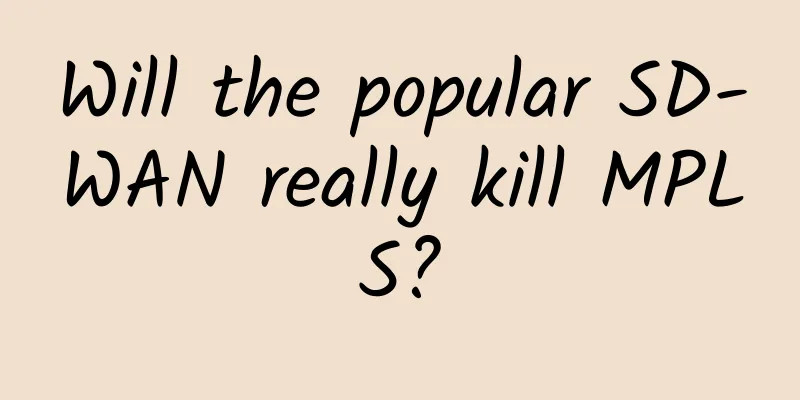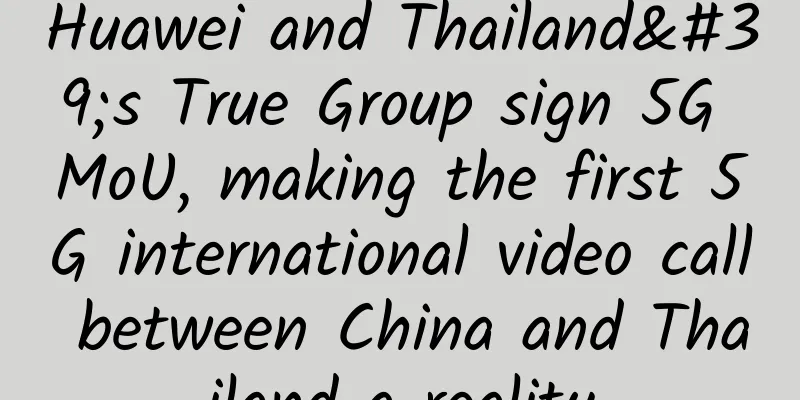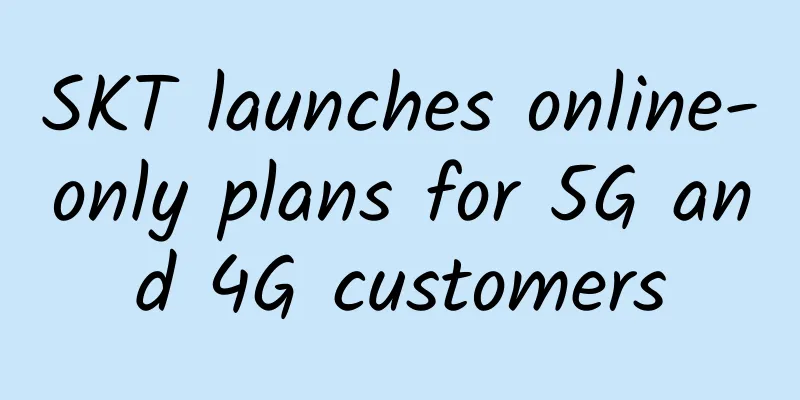5G speed may be slower than 4G?

|
In 2020, as the first year of 5G, 5G network construction has advanced by leaps and bounds, and 5G mobile phones have emerged in large numbers.
However, even if you buy the latest 5G mobile phone and a big "5G" signal icon appears in the upper right corner of the phone after you turn it on, don't be too excited about it. In actual use, the network speed may be slower than 4G!
We are clearly using 5G! Is the huge 5G LOGO on the phone fake? Below, I will introduce in detail how operators have gone to great lengths to achieve 5G coverage. This article mainly focuses on dynamic spectrum sharing. 1. Let’s start with 5G spectrum The 5G spectrum is divided into two segments. The frequency band below 6 GHz is called Sub6G, which is FR1 (Frequency Range 1), and the millimeter wave frequency band above 6 GHz is called mmWave, which is FR2 (Frequency Range 2). The spectrum of Sub6G is divided into FDD and TDD frequency bands. This division is inherited from 2G, 3G and 4G. FDD has a long history and generally has a lower frequency band. The mainstream frequency bands such as 700M, 800M, 900M, 1800M, 2100M are all FDD; while the frequency band of TDD is relatively higher, such as 2.3GHz, 2.6GHz, 3.5GHz, 4.9GHz, etc. These TDD frequency bands have large bandwidth and can well support 5G core technologies such as Massive MIMO, so they can provide high-speed Internet services (that is, eMBB) and are "real 5G." In China, China Mobile has a 160MHz bandwidth on 2.6GHz, and China Unicom and China Telecom each have a 100MHz bandwidth on 3.5G, all of which have the conditions to deploy 5G ultra-high-speed services. However, this real 5G also has its shortcomings. The first is that the frequency band has poor coverage, especially in the uplink. More sites must be built to achieve good coverage. Secondly, the RF unit must use Massive MIMO to reflect its advantages, and the baseband unit must naturally use a new platform to support the high speed of 5G, which leads to high costs and slow deployment. What about the FDD bands? These bands are usually occupied by 2G, 3G or 4G, with very small available bandwidth, and it is difficult to implement Massive MIMO on the FDD spectrum. Therefore, even if 5G is deployed, the speed is actually about the same as 4G. It can be called "5G that does not live up to its name." Although FDD's 5G is not worthy of its name, it does have its advantages. That is, the existing 3G or 4G frequency band can be allocated to 5G. The hardware of the original base station does not need to be changed. Only a software upgrade is needed to support 5G! Although the bandwidth is small and the speed is slow, the coverage is good because of the low frequency band! Now that 5G mobile phones have emerged everywhere, the most annoying thing for users is that they can only use 4G after buying a 5G mobile phone. If the low-frequency 5G in FDD mode is deployed, 5G mobile phones can display the 5G signal logo everywhere. And the cost is lower! Therefore, although the speed of 5G in the FDD frequency band is not fast, it can quickly and cheaply achieve large-area coverage of 5G, which undoubtedly plays a huge role in brand promotion. Therefore, many foreign operators are planning to do so, and China's three major operators are no exception. The demand for 5G on FDD is clear, but the FDD spectrum is occupied by 4G. If all of it is used for 5G, the 4G speed will inevitably slow down and the user experience will be reduced. In the early stage of 5G, there are few users, and the network is idle and wasted. What can we do? It would be great if 5G could share spectrum with 4G! In this way, a spectrum can be used for both 4G and 5G. When 4G users come, 4G services will be provided, and when 5G users come, 5G services will be provided. It would be great if the spectrum can be adjusted dynamically and flexibly without waste! Driven by the above requirements, 3GPP introduced the 4/5G dynamic spectrum sharing technology in the R15 protocol. This technology has a proprietary name called DSS, which stands for Dynamic Spectrum Sharing, and is also supported by Qualcomm's X55 baseband. 2. How is DSS implemented? First, let's take a look at the initial state of pure 4G use without spectrum sharing. As shown in the figure below, the entire 20M bandwidth is completely used by 4G, which is clean and neat. Going further, 4G allocates half of the spectrum to 5G, but 4G and 5G operate independently without interfering with each other. As a result, 4G resources were cut in half, and the speed was naturally reduced by half, which put a lot of pressure on the network and deteriorated the user experience. As for 5G, due to the small number of users, the network was idle, resulting in a waste of spectrum. In addition, users have high expectations for 5G, so the speed provided by that little spectrum is naturally disappointing. It's really a lose-lose situation. So is it possible to turn off the 5G carrier when idle to ensure the 4G experience? Sorry, no, because the FDD 5G low frequency belongs to the coverage layer. After turning it off, even the 5G bottom-up coverage will be gone. Static allocation is unreliable, so real-time dynamic spectrum sharing between 5G and 4G must be implemented. The real-time here is also called TTI-level spectrum sharing. The full name of TTI is Transmission Time Interval, which means the transmission time interval. FDD 5G and 4G generally use the same subcarrier spacing, which is 15KHz. In this way, 4G has one subframe per millisecond, and 5G also has one subframe per millisecond (including one time slot). Both contain 14 OFDM symbols per millisecond. Therefore, the TTI of 4G and 5G are the same, and they are scheduled every millisecond. The allocation of spectrum is dynamically refreshed. Those with more traffic will be allocated more spectrum, and those with less traffic will be allocated less spectrum. The spectrum utilization rate will naturally improve. However, there is a difference between ideal and reality. 4G includes various control channels and reference signals in the entire bandwidth, which must occupy certain resources permanently. 5G requires fewer channels with fixed resources, but it is impossible to have none. As a result, channel conflicts are inevitable. The only way to solve this problem is for everyone to sacrifice a little speed, give way to each other in the use of time and frequency resources, and try to coexist harmoniously. According to industry test results, the loss of 4G under DSS is less than 10%, and the loss of 5G can reach 25%. Therefore, after activating DSS, the spectrum efficiency actually decreases, and the user experience rate is of course also reduced. Of course, there is no way to have it both ways. Traditional DSS only considers dynamic spectrum sharing between 4G and 5G, but in fact, most frequency bands are for three standards. For example, 1800M can be used for 2G, 4G and 5G at the same time, and 2100M can be used for 3G, 4G and 5G at the same time. Therefore, dynamic spectrum sharing solutions between multiple standards are about to emerge. ZTE has expanded on the original Magic Radio Pro solution and proposed the Super DSS solution, which can support dynamic spectrum sharing between 2G/4G/5G or 3G/4G/5G. Huawei has also expanded the original CloudAir solution and proposed the Hybrid DSS solution, which supports the following scenarios: 5G large bandwidth scenario, 5G uses a continuous large bandwidth spectrum greater than 20MHz, and 4G uses a 20MHz bandwidth; flexible bandwidth scenario, supporting non-standard bandwidth of existing FDD spectrum, such as 19.8MHz for 5G; three-mode coexistence scenario, supporting dynamic spectrum sharing of three standards at the same time, 2G/4G/5G, 3G/4G/5G or NB-IoT/4G/5G coexistence of three standards. Finally, should DSS be deployed using NSA or SA? The answer is both, but the impact on user experience will be different. In SA mode: If 5G only has a single carrier implemented through DSS, due to the better low-frequency coverage, the mobile phone is likely to stay on this narrow bandwidth, low-speed 5G for a long time, and the user experience is not good. In fact, 4G may have several carriers, and the rate is higher after using carrier aggregation! In NSA mode: mobile phones can use this 5G carrier and multiple 4G carriers simultaneously through dual connection, and the experienced rate is faster than SA. However, since DSS has to deal with channel conflicts, the actual network speed is lower than that of the pure 4G network before 5G is deployed. Note that the above poor user experience problem will only occur if an operator only deploys FDD 5G as one carrier. In fact, China is developing both FDD and TDD, with FDD focusing on coverage and TDD focusing on capacity. The two complement each other and support each other, and the 5G user experience is improved. Finally, let’s summarize the value of DSS: 1. Rapidly and cost-effectively introduce 5G to solve the “have or have not” problem of 5G; 2. Support newly released 5G terminals, allowing users to see the 5G LOGO, retain users, and facilitate marketing activities; 3. Carrier aggregation is performed between FDD 5G and large-bandwidth TDD 5G to enhance uplink coverage. Well, this is the end of the introduction for this issue. I hope it will be helpful to you. Thank you very much for sticking with me to the end. |
<<: Where will the evolution of SD-WAN go?
Recommend
Interview Frequent: Talk about everything about HTTP caching
Speed, speed, and speed. If a website wants to pr...
What can 5G technology do? It will have a significant impact on 20 industries
First of all, we must know what 5G is. In a nutsh...
Wikipedia has adopted HTTPS by default and is now available in most countries…
One of the benefits of the Internet age is that w...
What is the Internet of Things, what is blockchain, and what is big data?
In the near future, the number of IoT devices wil...
A “Cat” Walking Alone on a Narrow Road: Cat.1 and Narrowband Communications (Part 2)
Labs Guide In the previous issue, "A Cat'...
5G penetrates into the B-end market and promotes the digital transformation of the industry
The core of 5G technology lies in the development...
Mobile networks want to kill WiFi, but it won’t work in China
According to a recent report by OpenSignal Mobile...
Architecture upgrades to prepare for 5G: 2018 network review
Looking back at the development of the network ma...
DotdotNetwork: $19/month - 2 cores, 16G memory, 30G SSD, 4TB/10Gbps bandwidth, Los Angeles data center
Recently, I received a submission from DotdotNetw...
Why Wi-Fi will not disappear but become more important in the 5G era?
This article is reproduced from Leiphone.com. If ...
Understand the Internet Security Protocol IPSec in 5 minutes
There are thousands of networks, but security is ...
Let's talk about 3CC, which is very popular this year
The day before yesterday, I published an article ...
Just remember one number and you can quickly calculate the available range of the IP segment.
As long as you remember a simple number, you can ...
LuxVPS: €3/month KVM-4GB/30GB/1TB/Germany data center
The LuxVPS domain name was registered in June 202...
Campus "Full Wireless" Lets Data "Speak"
The construction of the campus network of Beijing...









